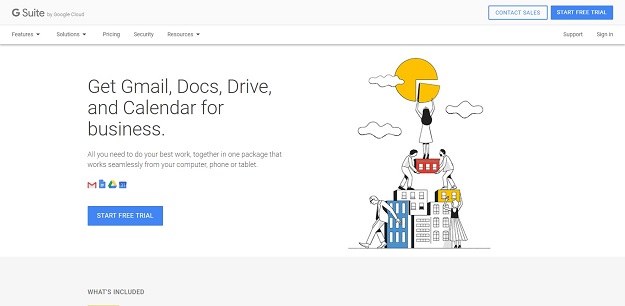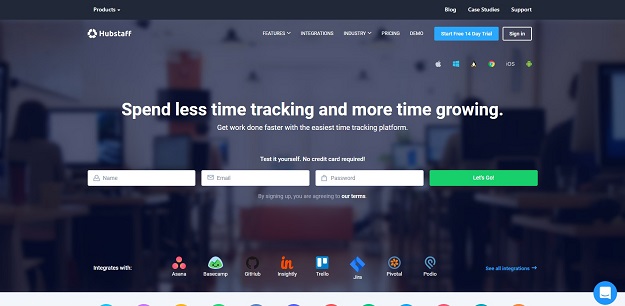Over the past few years, the number of professionals that use technology to work remotely has increased. This increase has lead to the companies adjusting to the change, which increased the demand for remote workers. Managing such a distributed team of workers can be a challenge. However, collaboration with remote workers can still be managed.
The World Economic Forum has found that flexible work, which includes remote work, has been one of the largest drivers for business model transformations in numerous industries. In line with this, flexible work has since redefined the separation between one’s professional and private life. Technology has changed the workforce climate. Now, work can be done anywhere and anytime all over the world. This has since impacted how businesses and organizations work.
Why Go Remote?
With more and more companies, startups, and entrepreneurs expanding into the digital platform and engaging in this change, the need for remote teams has risen. Remote teams provide:
● Capacity for adaptability, diversity, and a larger pool of diverse workforce that can help companies grow globally.
● Globally diverse workforce that expands the coverage of companies and organizations..
● Reduced operational costs and improved organizational efficiency.
However, there are challenges to working with remote teams. Such as recruitment and management of the remote teams for projects. A good first step to addressing these concerns identifying the outsourcing model, like offshoring or outstaffing, that best fit for your project. The outsourcing model can provide guidance on recruiting the right distributed team to collaborate with. The outsourcing model chosen can also set the framework for the management of the remote teams.
Managing Remote Teams
With how the teams are set up, the usual face-to-face and physical management style will be difficult to implement. There is also the issue of the different time zones where the members are coming from. Logistics, communication, and project management require more collaborative planning and a lot of adjusting.
Different management approaches can be applied by project managers. Aside from management techniques, there are also remote team management software applications and tools that can help alleviate the burden of arranging and maintaining the collaboration between project managers and distributed teams.
Great Remote Team Management Software
There are so many ways to collaborate with distributed teams. There are also even more tools that support remote team collaboration. One important aspect on how to manage a remote team is the quality of the tools that are used.
Remote management software can be individual to a specific task or category of activities, other project management tools can incorporate assistance for the entire process from start to finish. Such project management software can be a great asset that improves efficiency, team productivity, and turn out of the quality output of remote teams. We’ve identified significant aspects of remote team collaboration and identified the most prominent and well-reviewed remote management tools for each.
Communication

Great communication amongst the team members and their manager at all stages of a project can lead to team efficiency, met deadlines, and quick resolution of issues and concerns. When remote teams and their clients communicate well, everyone is on the same page with the goals of the project and the steps necessary to reach those goals.
With how remote teams are set up, communication can be a challenge. To ease and make remote team communication more convenient, a wide variety of team communication tools are available. Below are some of the highly popular and well-reviewed communication tools available.
● Slack
● Skype
● Google Hangouts
Project Management Tools

Establishing a partnership with remote teams and outlining the goals and objectives of a project is a great start to remote team collaboration. What comes next will be crucial in reaching the goals set for the project. This step is all about managing the entire project, which includes outlining specific steps or tasks that will lead to the goals, assigning team members to these tasks, establishing deadlines, and laying out a feedback mechanism for any and all concerns or issues for the entirety of the project.
There numerous tools that can streamline these tasks, some are for specific aspects such as feedback mechanism or establishing deadlines. There are also project management software that incorporates most, if not all, of these tasks and streamlines them for a more efficient workflow.
● Google Suite
● Basecamp
● Asana
● Trello
● Jira
Storage

With a team from all over the world, working at different times on a project, finding storage for project documents and relevant information can be a hassle. This storage needs to be accessible to all members at any time and can provide a modicum of security. Storage should also be adaptable and can be increased or decreased according to the needs of the team. Cloud-based storage has been the answer to these for quite some time now. Outlined below are the widely used cloud-based storage for both individual and team use.
● Dropbox
● Google Drive
● Box
Productivity Tracking

Because remote team members work irregular hours, it can be difficult to track the work of each member. There are many ways this can be addressed, from setting up a system of feedback or updates to using web-based applications or software to track the work of remote teams. These web-based applications are developed to track and record data on the work that members do and the times that they keep. Different applications have add-ons to this to make the experience better.
● Hubstaff
● Time Doctor
● When I Work
Security

Outstaffing and remote team collaboration can have security risks. Without a physical office for a centralized work and set up a framework of security, it can be difficult to ensure that the work, output, and other relevant project information is safe and secure. There are applications or software that managers and remote teams can use to make certain that their work is well-protected from internal or external threats.
● 1Password For Teams
● Meldium
Conclusion
The rise in popularity of remote work has pushed companies and businesses to adjust to the change and expand toward changing their business models. Numerous companies have moved towards having a diversified workforce and has since employed remote teams working from all over the world. Recruiting remote teams has its advantages:
● Provide a capacity for adaptability, diversity, and a larger pool of diverse workforce.
● Provide an avenue for businesses to expand their workforce to include a more globally diverse team.
● Reduce operational costs and improve organizational efficiency.
To benefit from collaborating with remote teams, identifying and applying the right outsourcing model for the needs of a company is important. The model used can set the tone for the management and implementation of the entire project. Aside from identifying the right outsourcing model, there is also the challenge of managing such teams. To help with this, there are numerous remote team management tools available that can ease the burden that managing a team of remote workers. With the right outsourcing model that best fit the needs of a company and a great set of project management tools, a high-quality output is produced by a very efficient remote team.
